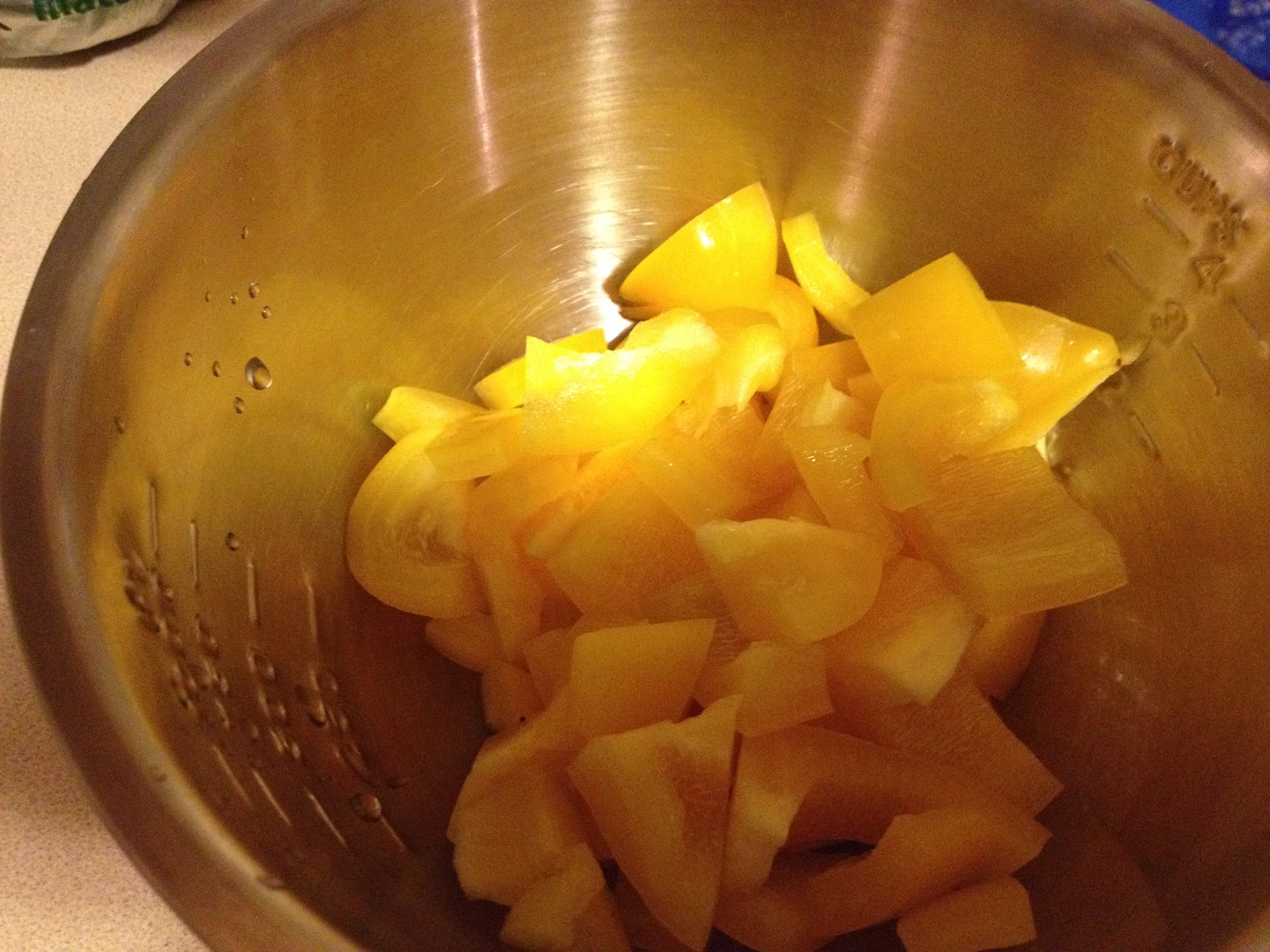I have professed before about my love affair with Cook's Illustrated magazine, and this recipe comes straight from the March/April 2012 edition.
If I had to pick a meal, that I cook, that I enjoy and look forward to the most, it would have to be this one! It is an extremely involved recipe with lots of steps, but they make it sooo worth it.
Recipe
 |
| Sliced Shiitake Mushrooms |
Sauce
1/2 c. chicken broth
2 Tbsp. sugar
2 Tbsp. soy sauce
4 tsp. Chinese black vinegar
1 Tbsp. toasted sesame oil
1 Tbsp. Chinese rice wine or dry sherry
2 tsp. ketchup
2 tsp. fish sauce
2 tsp. cornstarch
 |
| Sliced Celery |
Pork
12 ounces boneless country-style pork ribs, trimmed
1 tsp. baking soda
1/2 c. cold water
2 tsp. Chinese rice wine or dry sherry
2 tsp. cornstarch
Stir-Fry
 |
| Sliced Peppers |
2 scallions, white parts minced, green parts sliced thin
2 Tbsp. Asian broad-bean chili paste
4 Tbsp. vegetable oil (I use peanut oil)
6 ounces shiitake mushrooms, stemmed and sliced thin
2 celery ribs, cut on bias into 1/4 inch slices (I keep them in 2-inch pieces)
1. Sauce: Whisk all ingredients together; set aside
2. Pork: Cut pork into 2-inch lengths, then cut each length into 1/4-inch matchsticks. Combine pork with baking soda and water in a bowl. Let sit at room temperature for 15 min. (no longer!)
3. Rinse pork in cold water, drain well, and pat dry with paper towels. In order to do this efficiently, I wash the pork in a colander and on a clean counter, I lay out lots of layers of paper towels. I then lay all the pork out on the paper towels and take more paper towels on top and press them dry. Pretty wasteful of trees, but it is the easiest - believe me!
Whisk rice wine an cornstarch in a bowl and toss with pork to coat.
4. Stir-Fry: Combine garlic, scallion whites, and chili paste in a bowl.
5. Heat 1 Tbsp. of oil in a skillet over high heat until just smoking. Add mushrooms and cook until tender, 2-4 minutes. Add celery and continue to cook until celery is crisp-tender, 2-4 minutes. Transfer vegetables to separate bowl.
 |
| Cooked veggies! |
6. Add remaining 3 Tbsp. of oil to empty skillet on med-low heat. Add garlic mixture and cook, stirring frequently, until fragrant, about 30 sec. Transfer 1 Tbsp. to a bowl for later. Add pork to skillet and cook, stirring frequently, until no longer pink, 3-5 min. Whisk sauce mixture to recombine and add to skillet. Increase heat to high and cook, stirring constantly, until sauce thickens and the pork is cooked through, 1-2 minutes.
 |
| Once the sauce has thickened. |
Phew... That was a lot!
Hints: Before you start cooking, prepare all parts. You will be too busy to cut veggies, dry meat, mix up the sauce while having stir all the time.
I couldn't find the black vinegar in a grocery store but I did find it in an asian food mart. I couldn't find broad-bean chili paste so I just got chili paste from the asian section in Harris Teeter. I don't know the difference. I have made this recipe with both dry sherry and sweet rice wine and I can't tell the difference. Since this recipe is so involved, I usually triple it. It also helps by giving me left overs since the Mister eats soooo much! I have also gotten in the habit of adding green peppers. I think that many more types of vegetables would be a nice addition.
The Science Behind: Baking soda and Meat
Meat is made of proteins which is made of a series of amino acids. Sometimes, protein can be difficult to breakdown through quick cooking making the meat tough and fiberous. The denaturing of proteins can be accomplished physically through heating the meat or chemically by using ingredients that will perform or initiate a chemical reaction.
Since we don't want to use a pressure cooker or spend hours hovering over a stove to make dinner, we can employ baking soda to do to the job for us. The chemical name for baking soda is sodium bicarbonate. This is an alkaline material, for us scientists... a base. Proteins rely heavily on the pH to initiate certain processes such as folding and cleavages. Meat has proteins called calpains. Calpains cleave other proteins and are important in normal cell behavior. The activity of calpain can be initiated at high pH.
By soaking the meat in a base, baking soda, the calpain proteins begin to breakdown other fibrous proteins, therefore, tenderizing the meat. This looser protein structure holds on to water better and will allow the meat to be juicy and tender with minimal cooking.



No comments:
Post a Comment